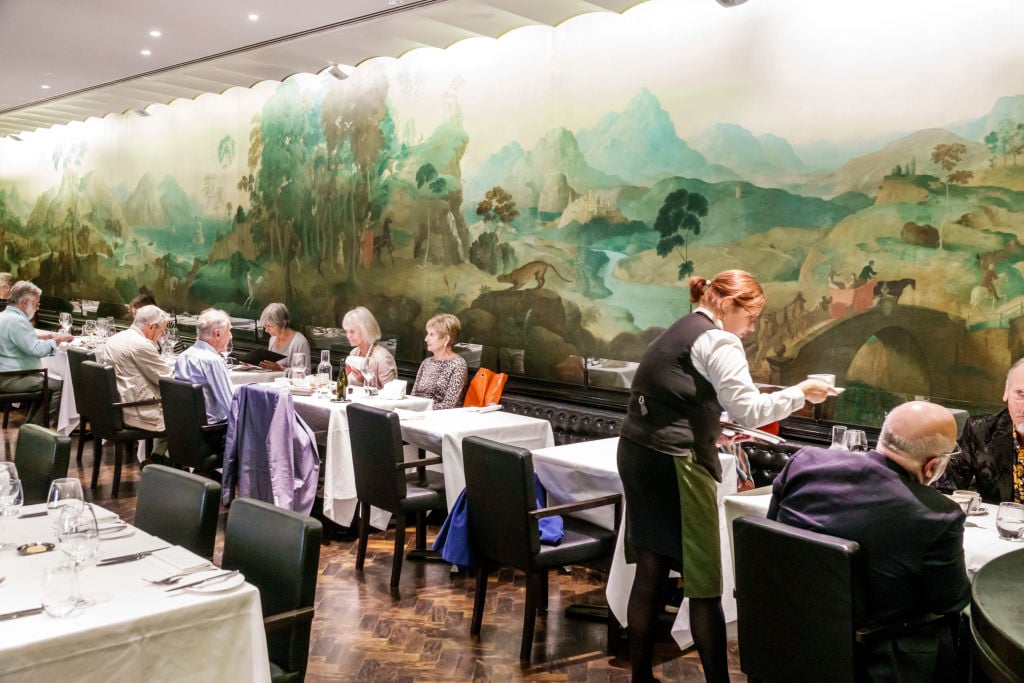
A controversial historic mural in Tate Britain’s café will go back on public view this year, but with a new commission that will “critically engage” the work’s racist imagery. The London museum announced its plans after holding “rigorous” conversations about the fate of the 20th century mural.
The large work by Rex Whistler, called The Expedition in Pursuit of Rare Meats, dates to 1927 and depicts a panorama of hunting scenes in exotic locales around the world. The imagery includes racist caricatures of Chinese people and a depiction of a Black child being kidnapped from his mother and enslaved.
The decision to keep the work on view alongside a contemporary artist’s reinterpretation was made by a working group called “The Rex Whistler Mural Discussions,” which was co-chaired by five members, four of whom were people of color. (The fifth chair was Tate Britain’s director, Alex Farquharson.) The group consulted with artists, art historians, cultural advisors, and civic representatives.
The committee eventually came to a conclusion: to install a “site-specific installation” and incorporate “interpretative material” into the room. When it reopens next winter, the space will no longer be used for dining. The plan was approved by the museum’s board of trustees this month. An artist has not yet been chosen for the commission.
“The Rex Whistler mural presents a unique challenge,” Alex Farquharson said in a statement. “The mural is part of our institutional and cultural history and we must take responsibility for it, but this new approach will also enable us to reflect the values and commitments we hold today and to bring new voices and ideas to the fore.”
The contemporary intervention falls more or less in line with the U.K. government’s “retain and explain” policy, which recommends institutions keep problematic works and statues on view.
The discussions around the mural, which is protected cultural heritage, were not easy, according the individual statements from the co-chairs. Amia Srinivasan, an Oxford University professor, described the conversations as “open, rigorous, and filled with good-natured but deep disagreement.”
In 2018, the museum added explanatory text that acknowledged the mural’s racist imagery. But amid a broader reckoning over race in the summer of 2020, the issue resurfaced and some criticized the institution for keeping the mural on display. A petition calling for its removal received a total of 7,500 signatures.
In light of the petition, the museum quickly updated its website, removing a tagline that described the restaurant as “the most amusing room in Europe.” In December 2020, it announced that the mural would be subject to further review, and the room would be closed until further notice. The New York Times reported that staff had long complained about the mural, but that “nothing happened.”